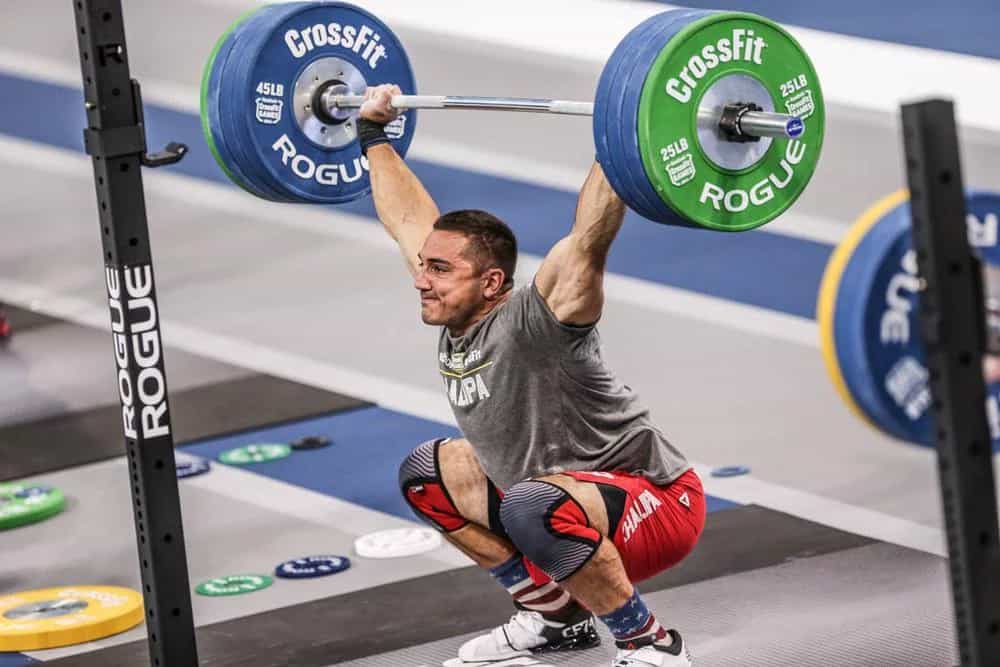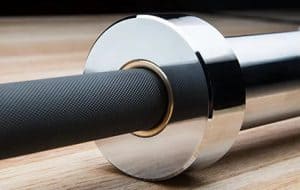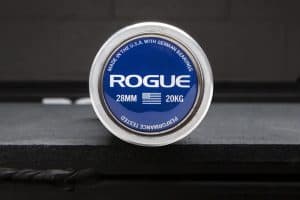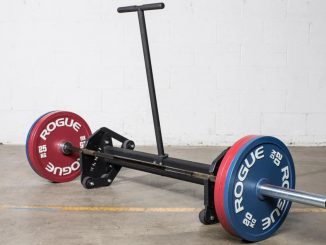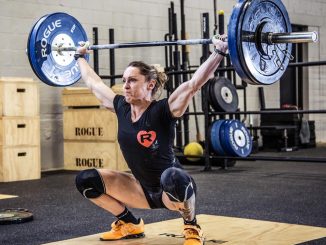Let’s look at who makes the best Olympic weightlifting barbell.
What’s an Olympic weightlifting barbell (also sometimes called an Oly bar)?
It’s a tough barbell used for lifting big weights.
But, more importantly, it has the qualities you need for the Olympic lifts: the snatch, and clean and jerk.
What exactly does that mean? That’s what we’ll explain next.
First, let’s look at an example. Shown here is someone you might recognize (Rich Froning) using the Rogue Olympic WL Bar to perform a “snatch”.
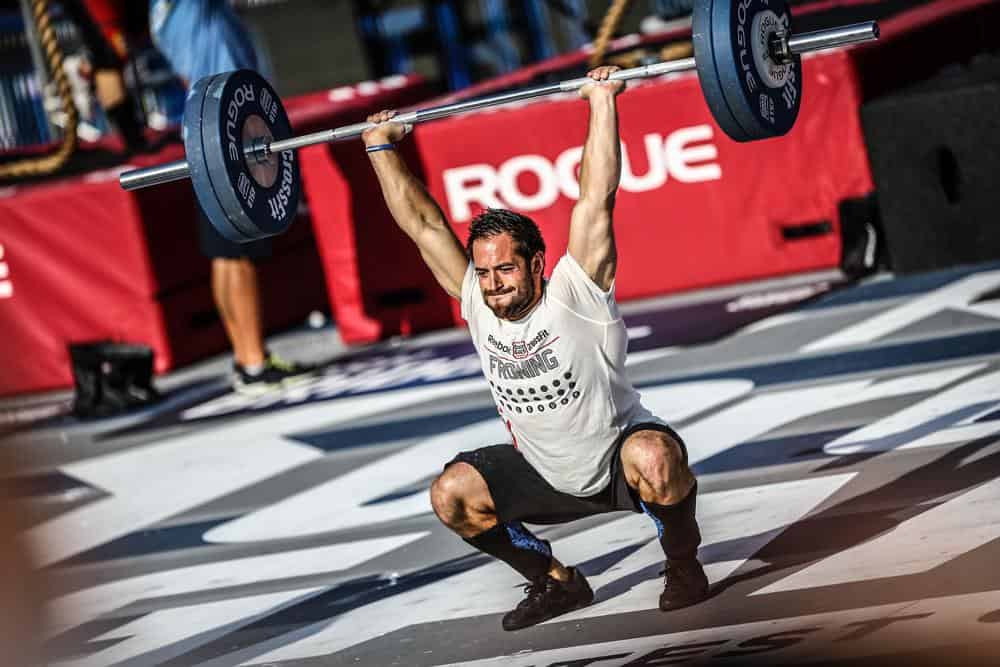
The snatch is one of the two lifts used in Olympic competition – but I’m betting you already know all about that.
Here’s all the Olympic weightlifting barbells we are going to review in this article:
Features of the Best Olympic Weightlifting Barbells
These bars are big so they can hold a lot of weight, but they have important differences as compared to the barbells used for traditional powerlifting moves like the squat, deadlift, and bench press.
First of all, every bar here will be a bearing bar. That means the revolving sleeves (where the plates go) is supported by multiple needle bearings.
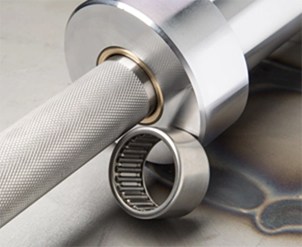
And that means the plates (on the sleeves) can spin for days…
Smooth, frictionless spin helps you hoist more weight overhead efficiently.
Regular barbells use bushings – which are tough, low-maintenance, and cheap. But they don’t spin like a bar with needle bearings – it’s no contest.
Secondly, these bars are constructed with steel that provides for “whip”.
You know how the bar bends a bit when you load it up really heavy? Whip is the same principle, but when harnessed in the fast Olympic lifts this gives you better efficiency – and let’s you lift more.
Barbell whip allows the lifter to utilize the momentum of the weight to lift more.
“Whip” is accomplished via a combination of the steel the bar is made of – and the diameter.
Every bar here is going to have a 28mm shaft diameter (for a men’s barbell). That’s the right diameter for whip and grip.
A Men’s Olympic barbell weights in at 20kg (about 44 lbs.)
Here’s some more info about the general dimensions of such a bar (again this is the Rogue Olympic WL Bar).

A Women’s Olympic barbell will be 25mm in diameter (which is easier to grip for those with smaller hands) – and it will be slightly shorter as well. As a consequence, a Women’s Olympic barbell only weighs 15kg (33 lbs.)
These barbells have to be tough – because they are going to be dropped from overhead a lot (with bumper plates.)
How do you finish an Olympic lift? You drop the bar – you don’t lower it under control (in most circumstances).
You also have to be skilled at bailing out from a failed lift – and with Oly lifting that means dropping the bar.
Therefore, the strength and durability of the bar needs to be far better than that of a powerlifting bar.
Lastly, most of these barbells will NOT have a center knurl.
In Olympic weightlifting competition the bar doesn’t spend any time on your back – but it does come in contact with your upper chest.
And in that case the center knurl is like taking a cheese grater to your skin – so most of these will not have a center knurl.
Let’s take a look at the bars that are available.
Rogue Olympic WL Barbell
We’ll start with Rogue’s basic bearing bar – the Olympic WL Bar.
20Kg, 28mm shaft diameter, no center knurl, needle bearings (5 per sleeve) – these are the basic features you need in a weightlifting barbell.
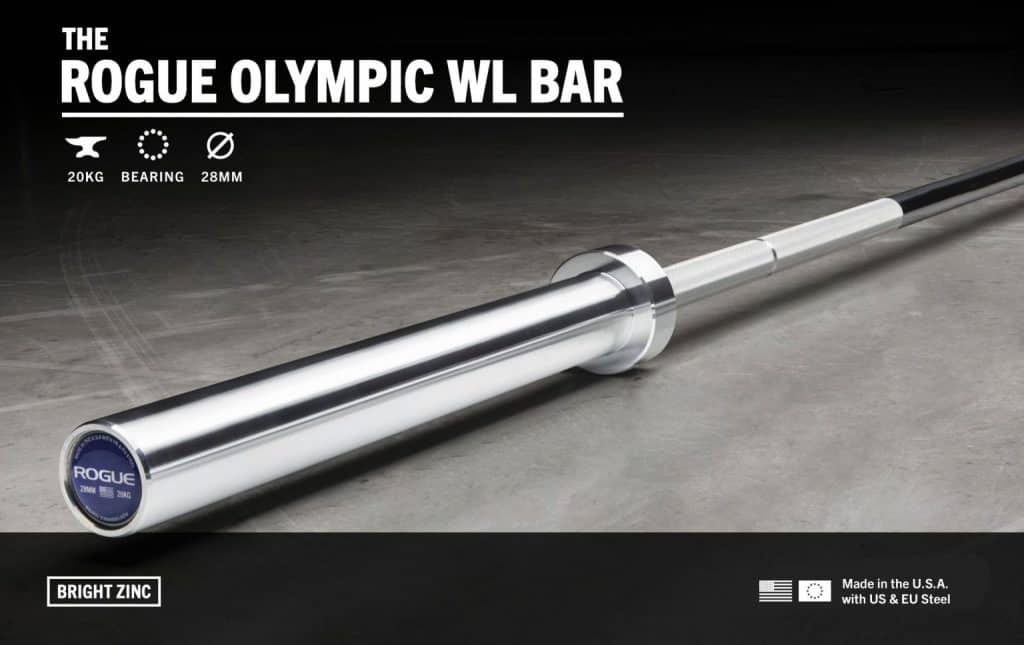
The shaft is made with 215K PSI tensile strength steel.
This bar has an “F2” rating on Rogue’s F-scale.
This is a measure of the durability of the bar. Rogue created this scale specifically to rate barbells based on their longevity when subjected to a lot of overhead drops.
The dimensions meet IWF (International Weightlifting Federation) standards – but this is not an IWF certified bar. This means you couldn’t use it in a competition.
This bar has a bright zinc coating on the shaft and sleeves. Zinc is “middle of the road” for oxidation (rust) resistance.
If you are in a humid location, like a garage gym or CrossFit box, you probably want a more robust finish.
That’s where Cerakote can help.
Cerakote is a thin-film ceramic polymer coating.
It was first developed by the firearms industry – where a tough, corrosion resistant coating is needed – but it can’t interfere with the moving parts of a firearm.
As it turns out, this is a great option for a barbell – because it can be applied to the whole bar including the knurl area where you need to grip the bar.
And therefore Rogue offers a Cerakote version of the Olympic WL Bar.
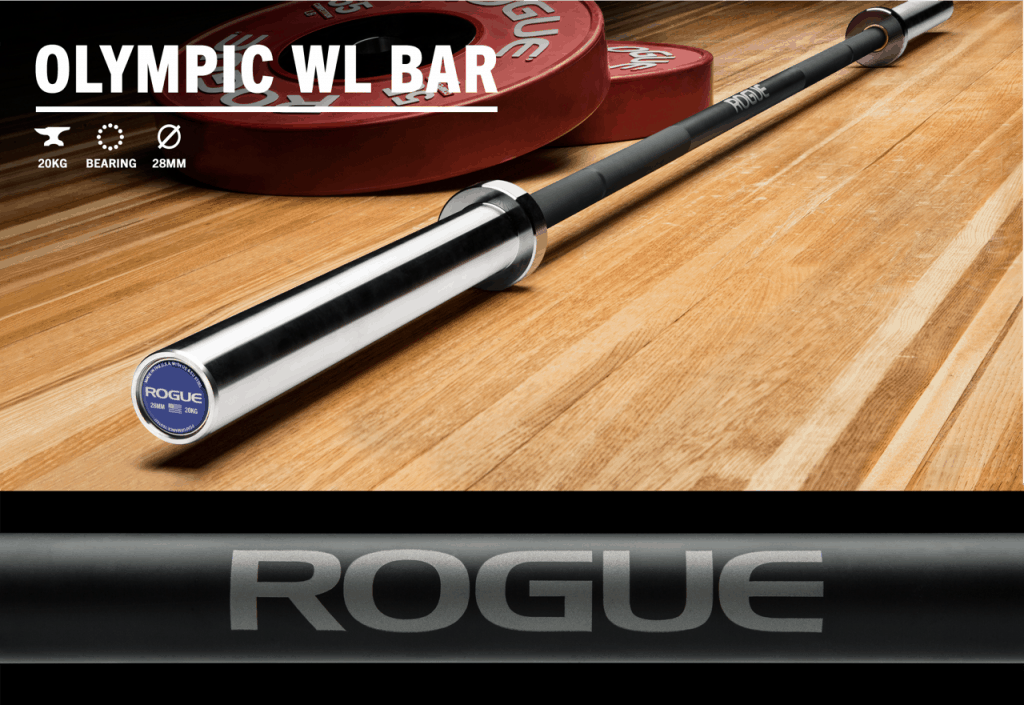
As you can see, the shaft has black Cerakote. The sleeves are hard chrome – which is the optimum material for the sleeves.
(Cerakote on the sleeves tends to get worn off as plates are loaded and unloaded over the years.)
This bar has an F-6R rating on Rogue’s F-Scale.
Rogue has applied their proprietary Rogue Work Hardening process to the steel – to make it ultra-durable.
This would be a great bar for use in a commercial facility or CrossFit box – where it is going to get dropped all day – every day.
Lastly, this bar is also available in stainless steel.
Why would you want that?
Stainless steel is more expensive, but it is the most corrosion (rust) resistant bar steel you can get.
And it’s got a great “bare metal” feel to it – because there is no plating or coating on the bar.
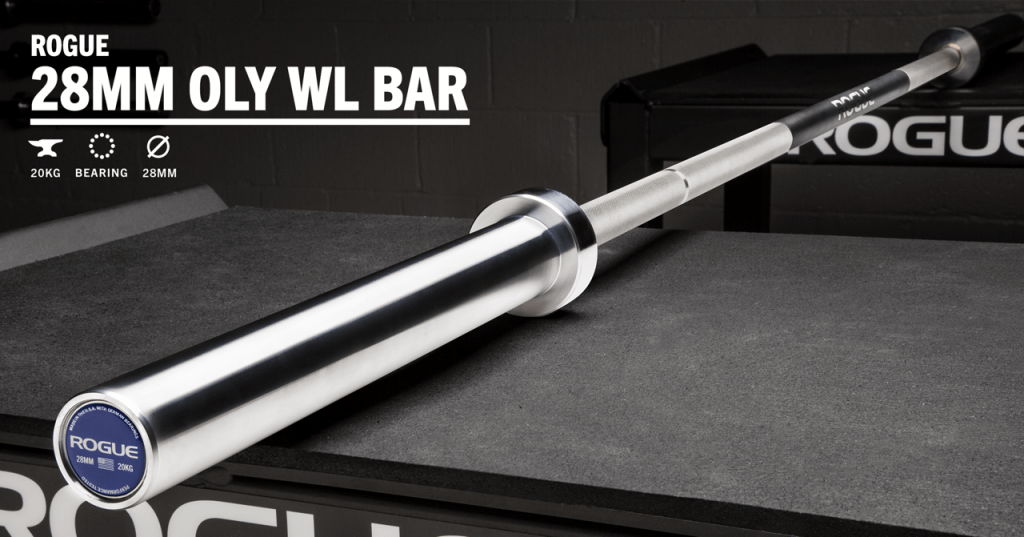
The Stainless Steel version of the bar has an F2 rating on the F-Scale.
Apparently Rogue’s work hardening process can’t be applied to stainless.
This is still enough durability for a home or garage gym.
IWF Certified Olympic WL Bar
Earlier we mentioned that these bars meet the general International Weightlifting Federation (IWF) size specs for competition barbells.
But only one of these bars is IWF certified.
The IWF Certified version of the Olympic WL bar is the one to get – if you are running a competition.
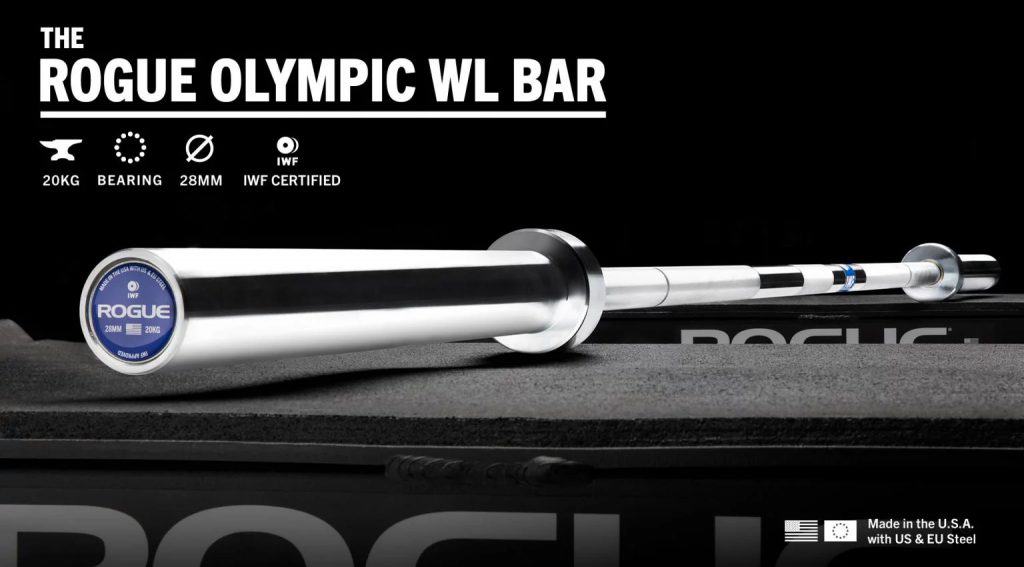
This bar DOES have center knurl.
Why? Because IWF barbell specifications require a center knurl.
(They also require the blue identification markings on the end caps and shaft.)
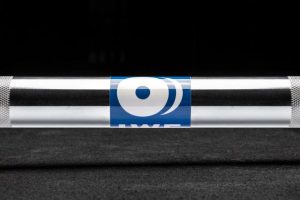
What is probably more important though – this bar has Rogue’s F-6R rating. It has the RWH process applied to it to ensure it is highly durable.
You can’t have a barbell failing during a competition!
There’s also an IWF certified WL Bar with Cerakote shaft.
(That’s another benefit of Cerakote – it let’s you do some cool things with colors, logos, designs, etc.)
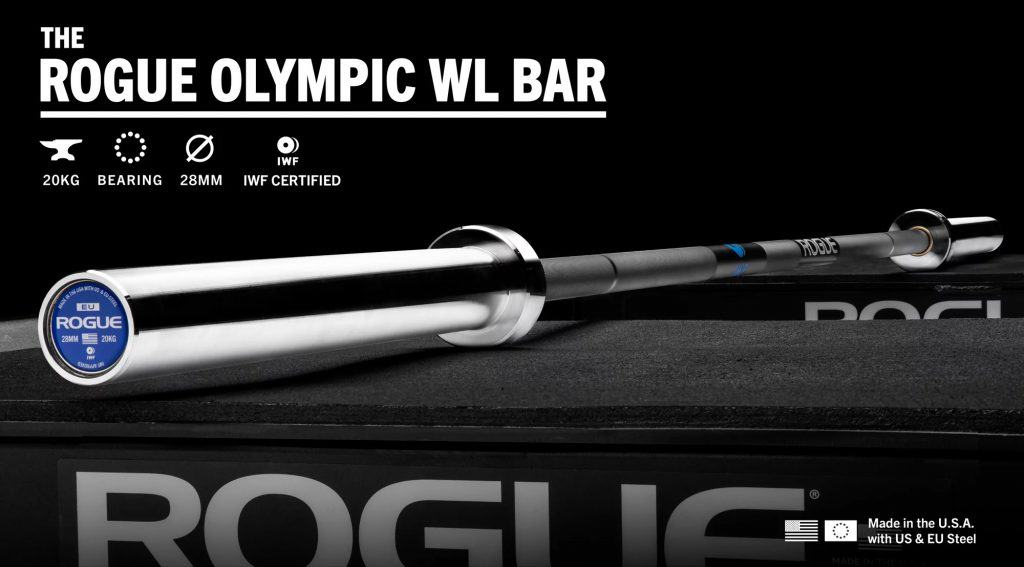
Per IWF specs, this version also has the blue logo on the shaft (and endcaps.)
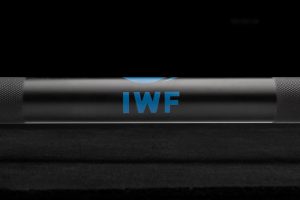
That Cerakote bar is also F-6R rated.
Do you need an IWF certified bar? Not unless you are using it in a competition. Otherwise, it’s a bit of an extravagance.
Best Olympic Weightlifting Barbell – In Summary
There are certain things we want in an Olympic weightlifting barbell:
- Tough steel (200K – 210K PSI tensile strength steel) – able to take many overhead drops,
- Bearings, not bushings
- No center knurl (unless you need an IWF certified bar – which must have center knurl.)
- 20 Kg weight for men or 15kg for women
- 28 mm shaft diameter (men) / 25 mm shaft diameter (women) – to ensure the right amount of flex to the bar aka “whip”.
There are several manufacturers that produce excellent products, and we hope we’ve been able to give you some good insights.
If you interested in doing serious powerlifting alongside Oly lifting? Look for a good dual purpose bar – we run down the details in our Olympic Barbell guide.
Photo Credits
We are an affiliate of Rogue Fitness, American Barbell, and Rep Fitness. If you purchase equipment after clicking links in this article we receive a small commission at no additional cost to you. This helps us bring you great info about these products.
All Rogue Fitness product imagery is property of Rogue Fitness, and provided by Rogue Fitness.
We are also an American Barbell affiliate – the photos of American Barbell products are property of American Barbell.
We are also a Rep Fitness affiliate – the photos of Rep Fitness products are property of Rep Fitness.
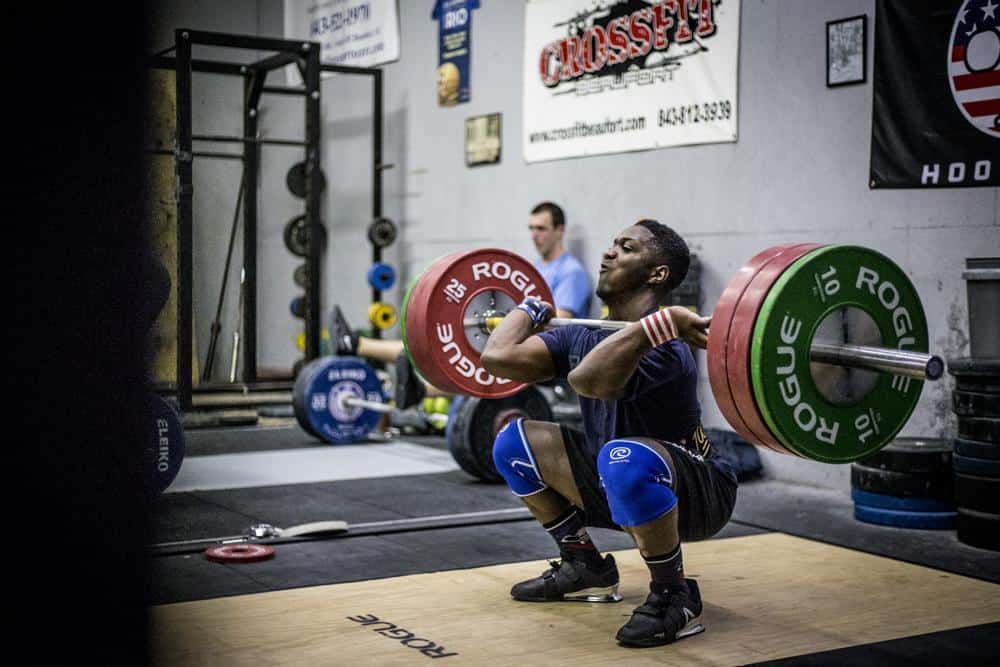

Tim is the founder of FitAtMidlife.com – an avid gym rat for 30+ years, he’s a reviewer of many, many shoes – and founder of the Speed Bag Gathering – the world’s only gathering of speed bag punching enthusiasts. See more gym reviews at Tim’s YouTube channel.

